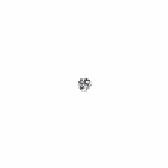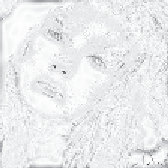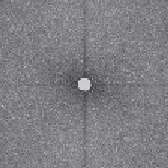Image Processing Reference
In-Depth Information
detail would be retained (and the image would look more like its original version); if the
circle was very small, an even more blurred image would result, since only the lowest
spatial frequencies would be retained. This differs from the earlier Gabor wavelet approach
which allows for
localised
spatial frequency analysis. Here, the analysis is
global
: we are
filtering the frequency across the
whole
image.
(a) Low-pass filtered
(b) Low-pass filtered
(c) High-pass filtered
(d) High-pass filtered
image
transform
image
transform
Figure 2.25
Illustrating low- and high-pass filtering
Alternatively, we can retain high frequency components and remove low frequency
ones. This is a
high-pass filter
. If we remove components near the d.c. component and
retain all the others, the result of applying the inverse Fourier transform to the filtered
image will be to emphasise the features that were removed in low-pass filtering. This can
lead to a popular application of the high-pass filter: to 'crispen' an image by emphasising
its high frequency components. An implementation using a circular region merely requires
selection of the set of points outside the circle, rather than inside as for the low-pass
operator. The effect of high-pass filtering can be observed in Figure
2.25
(c) which shows
removal of the low frequency components: this emphasises the hair and the borders of a
face's features since these are where brightness varies rapidly. The retained components
are those which were removed in low-pass filtering, as illustrated in the transform, Figure
2.25
(d).
It is also possible to retain a specified range of frequencies. This is known as
band
-
pass
filtering
. It can be implemented by retaining frequency components within an annulus
centred on the d.c. component. The width of the annulus represents the bandwidth of the
band-pass filter.
This leads to digital signal processing theory. There are many considerations to be made
in the way you select, and the manner in which frequency components are retained or
excluded. This is beyond a text on computer vision. For further study in this area, Rabiner
and Gold (Rabiner, 1975), and Oppenheim and Schafer (Oppenheim, 1996), although
published (in their original form) a long time ago, remain as popular introductions to
digital signal processing theory and applications.
It is actually possible to recognise the object within the low-pass filtered image. Intuitively,
this implies that we could just store the frequency components selected from the transform
data, rather than all the image points. In this manner a fraction of the information would
be stored, and still provide a recognisable image, albeit slightly blurred. This concerns
image coding
which is a popular target for image processing techniques; for further information
see Clarke (1985).




















